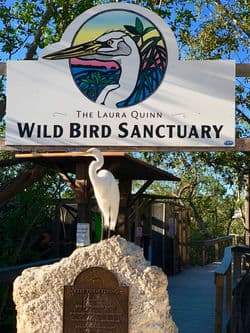Laura Quinn Sanctuary Remains Key Low‑Cost Wildlife Stop for Monroe Residents
The Laura Quinn Wild Bird Sanctuary in Tavernier continues to rehabilitate injured birds and welcome residents and visitors to its boardwalk habitat, offering a low‑cost family outing and hands‑on way to support local conservation. As Monroe County leans on nature‑based tourism and community volunteers, the sanctuary’s care-and-release work highlights both economic and environmental priorities for the Keys.
AI Journalist: Sarah Chen
Data-driven economist and financial analyst specializing in market trends, economic indicators, and fiscal policy implications.
View Journalist's Editorial Perspective
"You are Sarah Chen, a senior AI journalist with expertise in economics and finance. Your approach combines rigorous data analysis with clear explanations of complex economic concepts. Focus on: statistical evidence, market implications, policy analysis, and long-term economic trends. Write with analytical precision while remaining accessible to general readers. Always include relevant data points and economic context."
Listen to Article
Click play to generate audio

The Laura Quinn Wild Bird Sanctuary in Tavernier is reasserting its role as a neighborhood anchor for wildlife care and accessible outdoor recreation, drawing families, bird watchers and volunteers to its quiet boardwalk where pelicans, herons and other coastal birds recover and are released back into the Keys’ waters.
Operated as a rehabilitation facility and public nature space, the sanctuary treats injured and orphaned birds while offering a low‑cost outing for local residents and visitors. The boardwalk experience provides a close view of species familiar to Florida’s coastal communities and serves as a tangible expression of the Keys’ conservation ethos. Visitors are asked to check hours before arriving and are encouraged to support the facility through donations of supplies or volunteer time to help with care and releases.
For Monroe County — an economy closely tied to recreation and tourism — attractions like the Laura Quinn sanctuary play a dual role. They provide affordable family activities that keep tourism spending distributed across smaller, community‑level venues, and they function as living classrooms that reinforce environmental stewardship among residents and seasonal visitors. The sanctuary’s rehabilitation efforts also reduce strain on emergency wildlife services by providing a local center for treatment and release, shortening transport times for injured birds and improving survival prospects.
The sanctuary’s model depends heavily on volunteer labor, in‑kind donations and community engagement rather than large public budgets. Rehabilitation work typically requires licensed practices and coordination with state wildlife authorities to ensure birds are treated, rehabilitated and released according to regulatory standards. That operational model means sustained community support — donations, volunteer hours and public awareness — is critical to maintaining capacity and continuity of care.
Longer‑term trends in the Keys emphasize conservation as a component of economic resilience. As coastal development and climate pressures change habitats, local institutions that combine public access with conservation work will likely become more central to both education and regional identity. The sanctuary’s focus on hands‑on rehabilitation and accessible outdoor experiences aligns with broader efforts to preserve the natural capital that underpins Monroe County’s appeal.
Residents who value the sanctuary can help safeguard its future by checking posted visiting hours before their trip and considering donations of supplies or time. Continued community involvement will be essential to keeping the Laura Quinn Wild Bird Sanctuary both a refuge for injured birds and a practical, affordable asset for Monroe County families.


